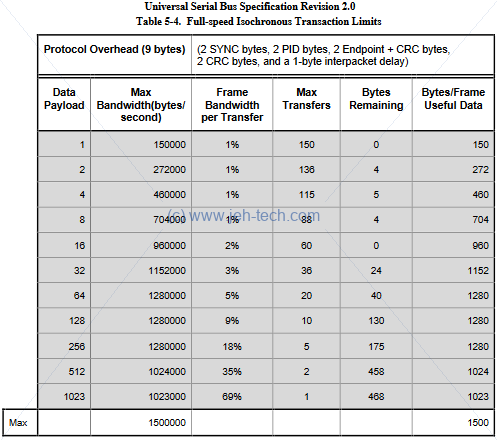USB
Page Contents

Transaction Limits

To the left is a screenshot of "Table 5-4. Full-speed Isochonous Transaction Limits" from the USB 2.0 standard [Ref].
To see how the limits are arrived at lets consider transfering the maximum isochronous packet size of 1023 bytes. Given the 9 bytes header we have a total of 1032 byes. At 12 Mbps, which is 1.5MBps, 1032 bytes takes 688uS. Thus in the 1 millisecond frame time allocated we can only do one such transfer. 312uS are not used, which is equivalent to 468 bytes.
The standard has similar tables for high speed and low speed transfers too...
If you were to look at "Table 5-5. High-speed Isochronous Transaction Limits", you might see something that puzzels you at first. Remember that high speed packets can be up to 1024 bytes. But, the table dows payloads of 2048 bytes and 3072 bytes as well. Why? The reason is that HS devices can specify 1, 2 or 3 transfers per microframe, hence the higher effective payloads.


